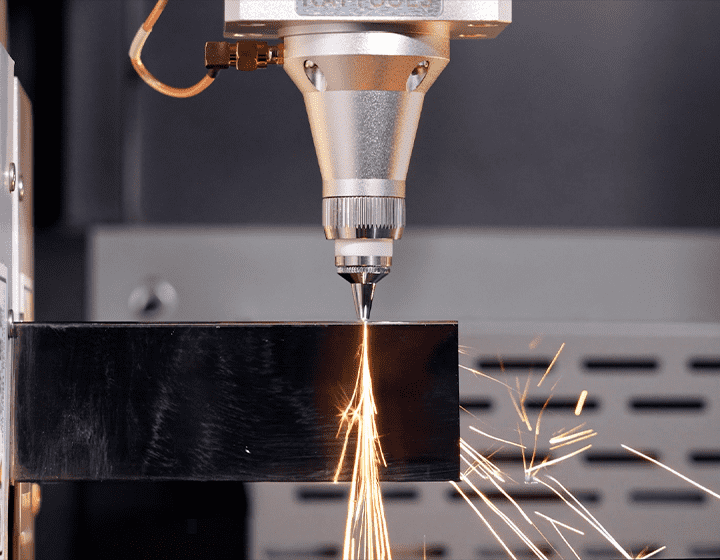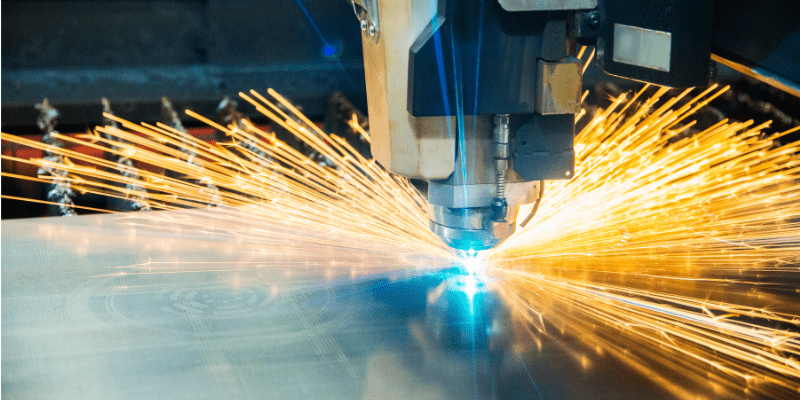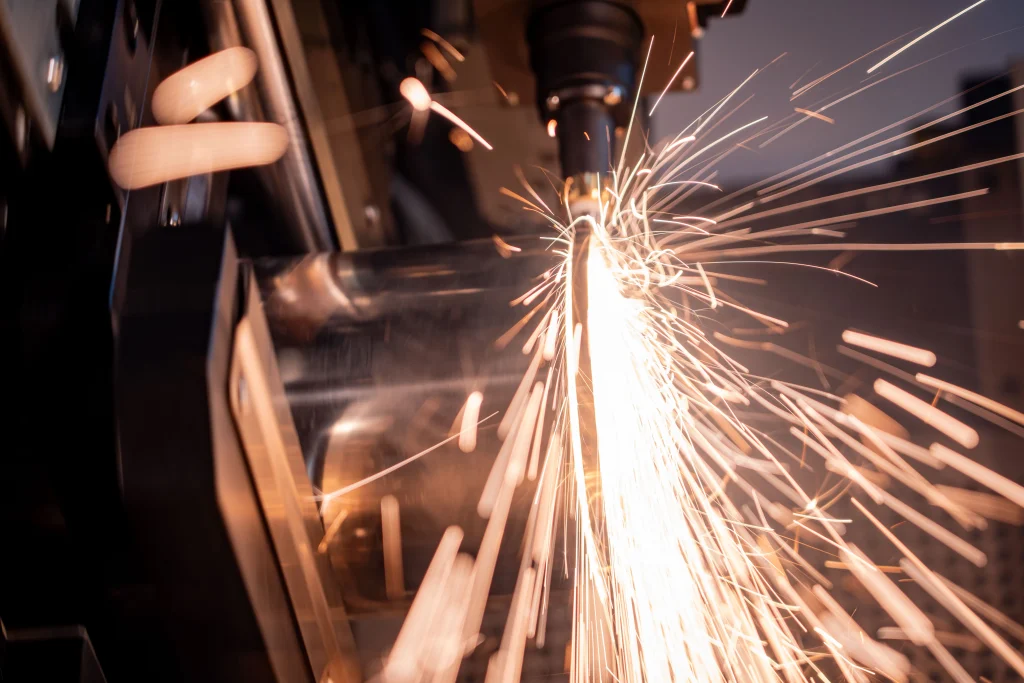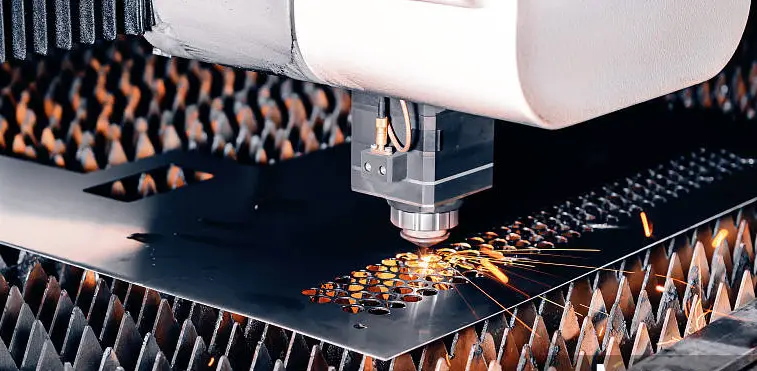Noticias
Accidentes de máquina de corte con láser de fibra: Comprensión de los riesgos y protocolos de seguridad
En industrias que dependen de máquinas de corte por láser de fibra, Los accidentes pueden plantear riesgos importantes tanto para los operadores como para el equipo.. Si bien los láseres de fibra son conocidos por su eficiencia, precisión, y versatilidad, operación incorrecta, falta de entrenamiento, y las medidas de seguridad inadecuadas pueden provocar accidentes que provoquen lesiones, daño, o tiempo de inactividad.

Comprender las causas comunes de Accidentes con máquinas de corte por láser de fibra. e implementar protocolos de seguridad es esencial para crear un ambiente de trabajo más seguro. En este artículo, Discutiremos las causas comunes de estos accidentes., como se pueden prevenir, y las mejores prácticas de seguridad para garantizar tanto la seguridad del operador como la longevidad del equipo..
Causas comunes de accidentes con máquinas cortadoras por láser de fibra
Las máquinas de corte por láser de fibra son equipos sofisticados que requieren una operación y mantenimiento cuidadosos.. Los accidentes pueden ocurrir por varias razones., desde errores del operador hasta fallas mecánicas. Exploremos algunas de las causas más comunes de accidentes.:
1. Falta de capacitación del operador
Una de las principales causas de accidentes en las operaciones de corte por láser de fibra es la formación inadecuada. Los operadores que no están capacitados adecuadamente pueden cometer errores en la configuración de la máquina., operación, o solución de problemas, aumentando la probabilidad de accidentes.
Factores de riesgo:
- Calibración o configuración incorrecta de la máquina.
- No entender las características de seguridad y los procedimientos de emergencia..
- Falta de conocimiento sobre manejo de materiales y parámetros de corte..

Prevención:
- Programas de formación integrales que cubren el funcionamiento de la máquina., procedimientos de seguridad, y solución de problemas.
- Cursos periódicos de actualización de seguridad para operadores existentes.
- Capacitación práctica con escenarios del mundo real para preparar a los operadores para situaciones de emergencia.

2. Mantenimiento inadecuado de la máquina
Como cualquier equipo industrial., máquinas de corte por láser de fibra Requieren mantenimiento regular para garantizar un funcionamiento seguro y eficiente.. Un mantenimiento inadecuado de la máquina puede provocar fallos mecánicos., como el sobrecalentamiento, subidas de tensión, o falla de piezas, todo lo cual puede causar accidentes.
Factores de riesgo:
- Desgaste de componentes críticos como el cabezal láser., motores, u óptica.
- Acumulación de escombros o polvo en el área de corte..
- No reemplazar las piezas desgastadas a tiempo.

Prevención:
- Establecer un programa de mantenimiento regular basado en las recomendaciones del fabricante..
- Inspeccionar componentes críticos como la óptica láser., sistema de enfriamiento, y suministro de energía regularmente.
- Mantenga limpia el área de trabajo para evitar que los residuos interfieran con el rendimiento de la máquina..

3. Medio ambiente y equipo de seguridad deficientes
Pueden ocurrir accidentes si no se utiliza el equipo de seguridad correcto o si el entorno alrededor de la máquina de corte por láser es peligroso.. Los láseres de fibra generan rayos de luz de alta intensidad que pueden provocar quemaduras graves o daños oculares.. Además, el proceso de corte genera calor, humos, y chispas, que puede provocar incendios o explosiones si no se toman las precauciones adecuadas.
Factores de riesgo:
- Ausencia de gafas protectoras para los operadores..
- Sistemas inadecuados de ventilación o extracción de humos..
- Falta de extintores o barreras de seguridad alrededor de la máquina..
Prevención:
- Asegúrese de que todos los operadores usen ropa adecuada gafas de seguridad láser Diseñado para longitudes de onda de láser de fibra..
- Instale sistemas de ventilación adecuados para eliminar humos y gases nocivos del área de corte..
- Coloque extintores cerca de la máquina y asegúrese de que los operadores estén capacitados para usarlos en caso de incendio..
- Utilice barreras o escudos de seguridad para proteger a los operadores y al resto del personal de la exposición al láser..

4. Manejo incorrecto de materiales
La manipulación inadecuada de los materiales durante el proceso de corte puede provocar accidentes.. Por ejemplo, si el material no está colocado correctamente en la mesa de corte o si se utilizan materiales incompatibles, puede provocar fallos de encendido, cortes desiguales, o incluso expulsión de material, que podría dañar al operador.
Factores de riesgo:
- Materiales mal asegurados o no alineados.
- Usar el tipo de material incorrecto para las configuraciones específicas del láser.
- Manipulación de materiales con las manos desnudas o sin guantes adecuados.
Prevención:
- Asegúrese de que los materiales estén colocados y alineados de forma segura en la plataforma de corte..
- Compruebe siempre que el tipo de material coincida con los ajustes de potencia del láser., velocidad, y centrarse.
- Utilice guantes protectores al manipular materiales para evitar quemaduras o lesiones con bordes afilados..

Prevención de accidentes con máquinas cortadoras por láser de fibra: Medidas de seguridad
Previniendo Accidentes con máquinas de corte por láser de fibra. Implica una combinación de entrenamiento adecuado., mantenimiento regular, equipo de seguridad correcto, y estricto cumplimiento de los procedimientos operativos. Aquí hay algunas medidas de seguridad importantes para implementar.:
1. Inspecciones de seguridad periódicas
Realizar inspecciones de seguridad exhaustivas de la máquina y el entorno de trabajo antes de cada turno.. Asegúrese de que todas las características de seguridad, como botones de parada de emergencia, enclavamientos de seguridad, y escudos protectores, están funcionando correctamente.


2. Uso de equipos de seguridad láser
Los operadores siempre deben usar gafas de seguridad láser diseñadas específicamente para longitudes de onda de láser de fibra.. Estas gafas protegerán sus ojos de la dañina radiación láser. Además, La ropa protectora, como guantes y delantales resistentes al fuego, puede evitar quemaduras causadas por materiales calientes o chispas..
3. Implementación de procedimientos operativos estándar (POE)
Establecer procedimientos operativos estándar claros y completos (POE) para operar el máquina de corte por láser de fibra. Los POE deben cubrir todo, desde la configuración de la máquina hasta el manejo de materiales y las acciones de respuesta a emergencias.. Los operadores deben seguir estrictamente estos procedimientos para minimizar los riesgos..


4. Establecer un programa de mantenimiento sólido
Un programa de mantenimiento bien estructurado es clave para prevenir fallas en los equipos. Limpiar periódicamente la óptica del láser., comprobar el sistema de refrigeración, inspeccionar las piezas móviles, y reemplazar componentes desgastados. Mantener la máquina en óptimas condiciones reducirá significativamente las posibilidades de mal funcionamiento y accidentes posteriores..
5. Formación y Educación Continua
La capacitación debe ser continua para mantener a los operadores actualizados sobre los últimos protocolos de seguridad y funcionalidades de la máquina.. Incluso los operadores experimentados pueden beneficiarse de cursos de actualización que refuerzan las mejores prácticas de seguridad.. Una fuerza laboral capacitada tiene menos probabilidades de cometer errores que puedan provocar accidentes.


6. Preparación para emergencias
Los accidentes aún pueden ocurrir a pesar de las mejores precauciones. Es importante contar con un plan claro de respuesta a emergencias. Todos los operadores deben saber cómo apagar rápidamente la máquina en caso de una emergencia., y deben estar familiarizados con los procedimientos de primeros auxilios en caso de quemaduras u otras lesiones..
Conclusión
Las máquinas de corte por láser de fibra son potentes herramientas que ofrecen precisión y eficiencia, pero con el poder viene el potencial de accidentes. Al comprender las causas comunes de Accidentes con máquinas de corte por láser de fibra. e implementar medidas preventivas, puede reducir el riesgo de lesiones y daños. Centrarse en la formación de operadores, mantenimiento adecuado, y cumplimiento de protocolos de seguridad para crear un ambiente de trabajo seguro. Recordar, La seguridad no es sólo un requisito: es una responsabilidad que garantiza el funcionamiento fluido y eficiente de sus procesos de corte..
Historias destacadas
-
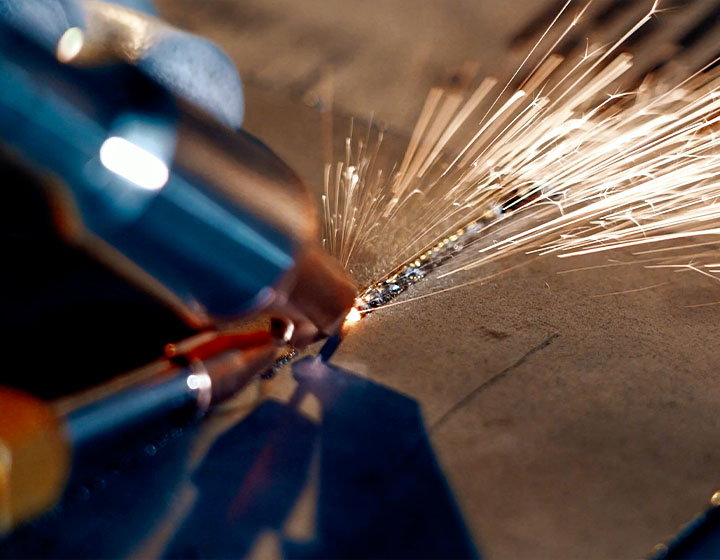 6 kw laser cutting | Industrial precision guide28 Nov 2025
6 kw laser cutting | Industrial precision guide28 Nov 2025 -
 Revolucionando la industria con la máquina cortadora láser de tubos de acero25 Nov 2025
Revolucionando la industria con la máquina cortadora láser de tubos de acero25 Nov 2025 -
 10Corte por láser en kW | Precisión & Fuerza21 Nov 2025
10Corte por láser en kW | Precisión & Fuerza21 Nov 2025 -
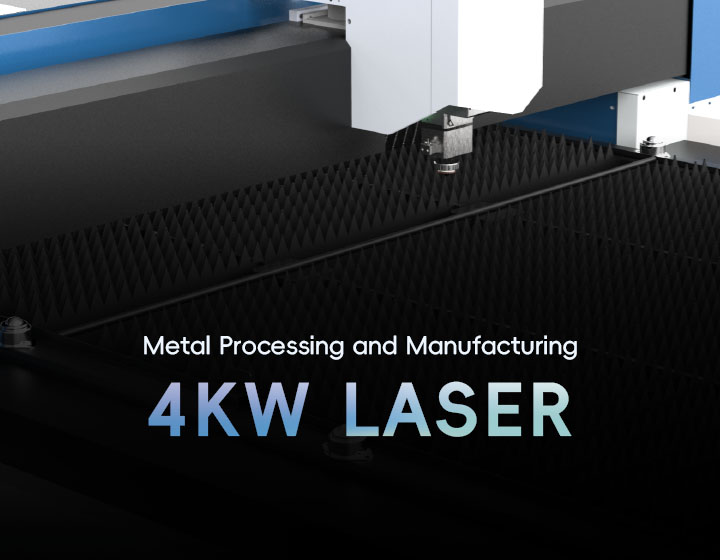 4kw de espesor de corte por láser | Capacidad máxima de material18 Nov 2025
4kw de espesor de corte por láser | Capacidad máxima de material18 Nov 2025 -
 Máquina cortadora de chapa a la venta: Ultimate Buyer's Guide14 Nov 2025
Máquina cortadora de chapa a la venta: Ultimate Buyer's Guide14 Nov 2025
Categorías de productos
- Cortador láser de metales
- Máquina soldadora láser
- Máquina limpiadora láser
- Máquina marcadora láser
- Prensa plegadora

